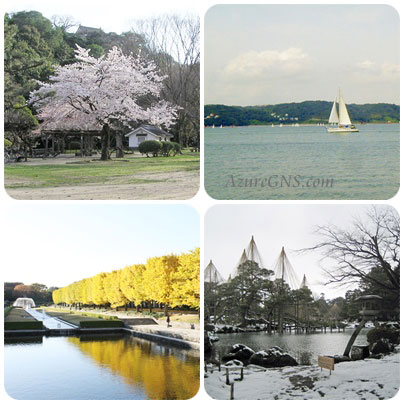Welcome
四季のある国は多く、それぞれの過ごし方があります。自然の中で移りゆく季節の美しさを享受し、時にはその厳しさに打ちのめされます。なかでも日本人は最も四季を愛でて、文化風習に取り入れている国民のひとつだと思います。
日本は春夏秋冬の期間がほぼ均等で、気候に顕著な違いがあります。日本は7,000個近くの島からなる小さな国ですが南北約3,000 kmにわたり、地域によって多種多様な風土を見ることができます。
現代では春季と夏季の間に雨期があり、1年が五季という考え方もあります。1年を24に分ける古くからの考え方である二十四節気(太陽暦と太陰暦を正しく表すために作れた暦上の区切り)があります。二十四節気をさらに細かく分けた、七十二候もあります。これらの節気はさまざまな季節の産物や多くのお祭りや文化行事と結びついています。
日本の歳時記と我が家の楽しみ方を綴ってみました。
このウェブサイトは、こちらにご同意を頂いた上でご利用願います。
We Japanese greatly love seasonal changes and they are reflected in our customs and culture. Many countries have 4 seasons, and each is celebrated in its own way. People enjoy the beauty of seasonal changes, even though the natural environment can often be harsh.
Each period of spring, summer, autumn and winter in Japan is almost equal in length and each has clear differences. Though Japan is a small country which consists of nearly 7,000 islands, it is approximately 3,000 km from the most northern point to the most southern point. Therefore, there are diverse natural features of the different regions.
Nowadays, we sometimes think that there are five seasons in a year. The reason for this thinking is that we like to include the rainy season between spring and summer. There is a traditional way to divide the year into 24 parts according to Nijushi-sekki (24 points on lunisolar calendars which were devised to correctly express solar calendars and lunar calendars). Moreover, Nijushi-sekki was divided into 72 parts to make the more detailed Shichijuni-ko. These points are marked by various seasonal products, frequent festivals and cultural events.
We’d like to introduce examples of Japanese seasonal events and explain how we enjoy them.
We ask you to carefully read and agree to the terms of use stipulated HERE before using the contents in this Web site.
